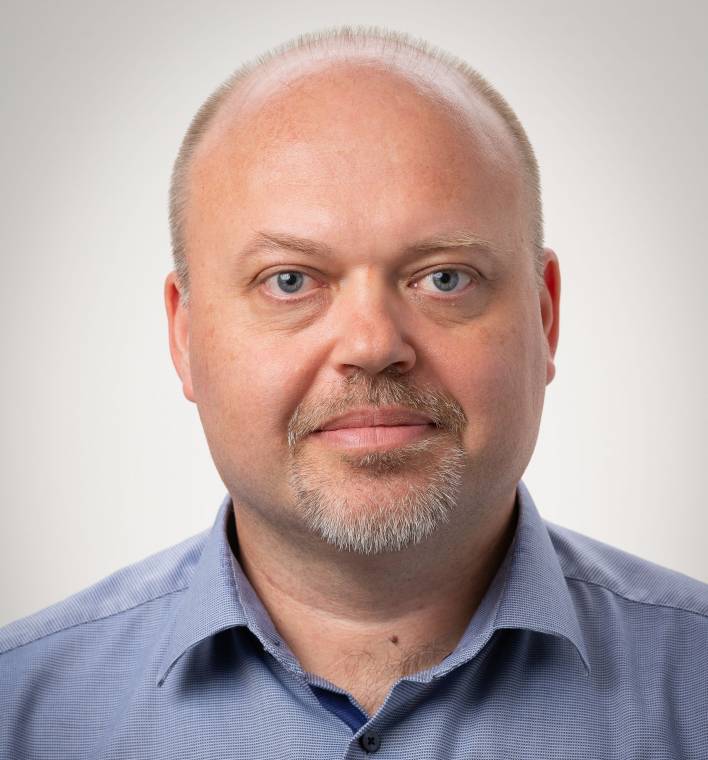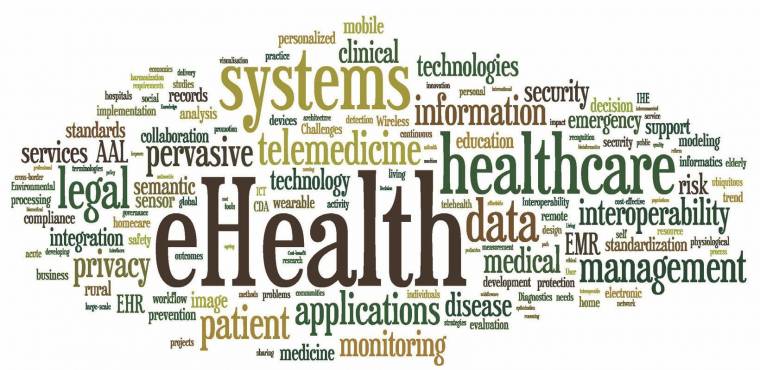Shorter medical waiting lists, more reliable diagnosis
Artificial intelligence is playing an increasingly important role in innovations that support the work of doctors and more efficient patient care. The pandemic accelerated research and development in this direction. This trend can be seen everywhere in the world, including GE Healthcare, which has a strong development base in Hungary. Most recently, a predictive analytical software with a total cost of HUF 3.35 billion was reported, which helps to plan the capacity of medical personnel and the optimal utilization of medical equipment. Attila Ferik, the Director of Software Development at GE Healthcare Hungary, reported to the paper on the project and other research and development that supports the operation of healthcare – recently completed, ongoing and planned.

Ferik Attila: A common problem with outpatient care in a clinic, such as a radiology clinic, is that patients do not show up at the scheduled time of the study. In this case, the equipment is unused, the staff is idle, and the patient’s care is delayed. Together, this causes a huge financial loss to the health care facility. The aim of our research project is to predict whether the patient is expected to show up at the time received or not. To do this, we examine the patient’s history, such as whether they had similar examinations, whether they showed how many times an examination might have had to be rescheduled. In addition, we take into account the expected weather for the five days before the study in the area of the hospital or the patient’s apartment. Thus, for example, it is likely that during heavy snowfall or rain, more people will stay home or be late for an examination. We always examine for five days, as this is the period during which the hospital still has the opportunity to enter, contact the scheduled patient by phone, and invite other patients to the examination if necessary. Our algorithm based on artificial intelligence makes the prediction from these data. Thus, one part of the product portfolio itself is an infrastructure that collects data from different in-hospital and out-of-hospital systems, which the other part, the AI-based algorithm, processes based on the given criteria.
Computerworld: How many are working on the development and when is the project expected to be completed?
FA: The application itself and the algorithm is being developed by about twenty people, and more than eighty more are working to produce the infrastructure needed for it. Of the project with a total cost of HUF 3.35 billion, the Hungarian government support amounts to 675 million, which we won through a tender. Although the processes have slowed down a bit due to the coronavirus epidemic, the number of people working on the project is almost complete. Work is scheduled to be completed by the end of 2021.
CW: Only GE Healthcare’s internal staff will be involved in such a far-reaching development. , or do they also have cooperating partners?
FA: In this project, we in Hungary only work with interiors, but we also have partners in Germany and the United States. We primarily involve hospitals and university clinics in testing and algorithm development.

CW: Do you work with other universities in other projects as well?
FA:
We are in contact with all medical universities in Hungary. Our relationship with the University of Szeged and the University of Debrecen is particularly diverse, where we also hold semester courses on corporate software development. But we also cooperate with other higher education institutions, such as the Technical University and the University of Óbuda. In addition to joint research and development work, we welcome trained young professionals from everywhere, be they doctors or engineers. In addition, of course, we have university and research institute connections all over the world, such as MIT in Boston, the Karolinska Institutet in Sweden, the Autonomous University of Madrid, the University of Erlangen, and the University of Technology in Munich. In order to be up-to-date in this field and to incorporate state-of-the-art knowledge into our products, we need to keep in touch and work with many university and research partners. By the way, more than 90 percent of our employees are Hungarian, but we are also completely open to foreign employees. We currently have colleagues from, for example, Russia, Poland, the United States, Serbia, Brazil or the Middle East.
CW: There are other products based on artificial intelligence in the development of which the Hungarian subsidiary has participated or is participating?
FA: All algorithms must be integrated into a data processing, image processing application , which requires a software platform running on the appropriate target hardware. For twenty years, we have been developing an image processing workstation in Hungary, Advantage Workstation, which covers more than 30 percent of the market globally. The workstation is used to run algorithms based on artificial intelligence. In Hungary, we are developing the same algorithm running platform on a cloud basis, which serves the algorithms running in the Amazon Web Services cloud with data and ensures their operating environment. Incidentally, we started building our own algorithm development team in 2015. We started with three researchers, now there are almost thirty people working in the team.

CW: Do they have any development specifically related to the Covid-19 epidemic?
FA: Last year, an analytical algorithm was extremely successful, which immediately indicates the formation of an air breast based on the X-ray image. This can sometimes be life-saving, as the breast is a life-threatening lesion that requires immediate intervention. Our solution is the first artificial intelligence-based algorithm in the world to be approved by the U.S. Food and Drug Administration. In addition, we developed another algorithm in 2020 that helps the doctor insert the ventilator tube properly by analyzing the chest x-ray. This will facilitate the safe and rapid care of coronavirus infected people. Another algorithm also attempts to determine, on the basis of X-rays and CT scans, how advanced the virus-induced lesion is in the lungs of a coronavirus patient. The result thus obtained helps the doctor to decide whether or not it is necessary to connect the patient to a ventilator and what therapy is appropriate. This product is a joint development of colleagues from Budapest, California and India.
CW: What are your plans for the near future? regarding development projects, on the other hand, for the Hungarian team?
FA: We are constantly looking for growth opportunities, involving both European Union and domestic tenders. Domestic opportunities are also expanded by the previously mentioned HUF 675 million state subsidy. An application is currently being prepared and we would like to submit it in the first quarter. New internal projects are constantly arriving in Hungary from the GE network. However, due to the Covid-19 situation, the plans of last year, the year before last, have changed somewhat, slowed down, and in line with this, the company is also undergoing internal transformations. However, there is no question of stagnation: only in the last two months have three new projects been launched in Hungary, two of which are greenfield investments and one has been transferred to us from another location. In the past quarter, some forty high value-added employees began working on new projects – in addition to colleagues developing predictive analytics software. The trend in Hungary is therefore clearly good.

CW: What is the impact of the pandemic on the global med-tech market?
FA: The pandemic situation has generally accelerated the development of modern technologies, digital dissemination, acceptance and use of devices. In healthcare, this acceleration was very large. That’s why we started developing things that last year we only planned for the next two or three years. There is an increasing trend to reduce the number of physical contacts between patient and physician. The first appointment should, if possible, take place on some digital channel, where they will try to decide which care is best for the patient’s recovery as soon as possible. Procedures that help to observe the patient remotely, even at home, such as after surgery, are also spreading. We are also working on such solutions, along with all our competitors. Everyone is trying to come up with a set of solutions that covers as much of the necessary patient paths and medical processes as possible. Hospitals try to select products from different suppliers to best cover their digitization needs. Complete solutions are the most attractive, as connecting and cooperating different systems from several manufacturers is typically a difficult task. This is why hospitals usually like to buy all the equipment they need from a particular manufacturer. All players in the market see that they need to move in this direction. An important trend in the near future is also that it is not only products that help diagnosis or therapy that will play an important role in healthcare institutions. They are playing an increasingly important role in more efficient patient care, better use of hospital resources, products that help reduce waiting lists, which can save you a lot of money, but can also bring extra revenue to healthcare institutions.
Hardware, software, tests, curiosities and colorful news from the IT world by clicking here!
The post Shorter medical waiting lists, more reliable diagnosis appeared first on World Weekly News.
